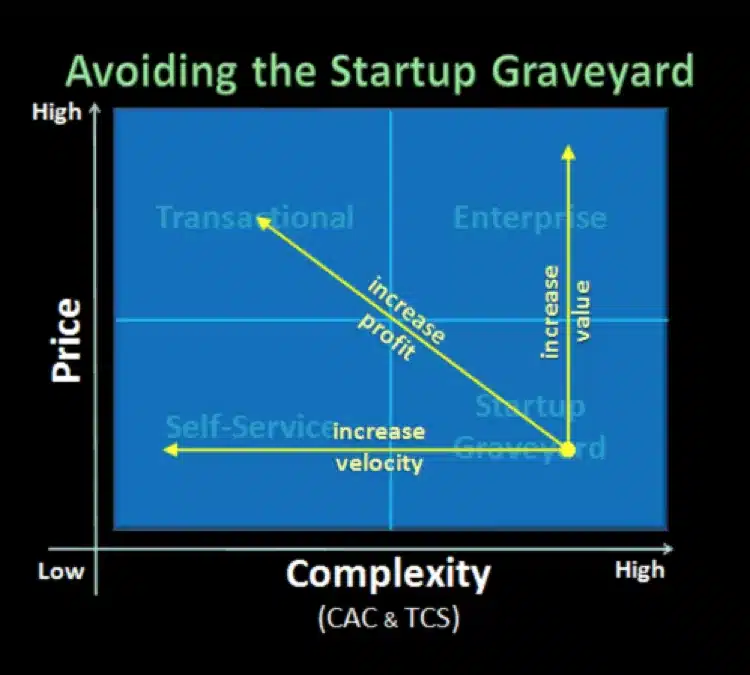SaaS marketing metrics that boost ROI. We all know that SaaS marketing is different. You’re dealing with a short buying cycle, the risk of churn, no physical product, and a demanding, fast-paced, crowded market.
You’re also dealing with a potentially overwhelming amount of data. As Neil Patel puts it, in SaaS marketing, “Your greatest asset is your information.” Customer data comes at you from all sides. This is great, obviously – harnessing the power of the data you collect can boost your sales, create amazing original content, and send your marketing ROI through the roof.
But when you’re starting, it can be difficult to know where to even start. Which metrics are important to the bottom line – and which are just good for your ego? What information do you need to be watching, and what can you let slide by? Metrics are especially important in SaaS marketing because of the difference between SaaS and traditional sales. In the words of Ryan Hilliard of Codeless:
“The traditional metrics fail to capture key elements that drive SaaS marketing ROI. The normal way of looking at metrics would bankrupt you in about three months.”
If you’re looking at the wrong part of the funnel in SaaS, you’re missing the point of SaaS marketing – it’s not just about acquiring customers, it’s about retaining and monetising them too. In SaaS, as you know, acquiring customers is often the easy part – after all, your entry-level product is often free, or at least very inexpensive. Keeping those customers, making them happy, and persuading them to invest in more expensive products – that’s the hard part.
Understandably, this leads many SaaS marketers to decide to measure everything. After all, if you can’t monetise your customers, you’re left with negative ROI, spending more to acquire customers than you gain once you’ve got them. So there is a natural tendency to try to optimize every single metric in the hopes of staying out of the weeds. But measuring everything also leads to paralysis by analysis – and the world of SaaS moves fast. Plus, information overload can leave your team focused on tiny gains in unimportant areas while missing the metrics that give you big-picture results.

Top of the Funnel Metrics
In some ways, these are the easy ones – and often where SaaS marketers tend to focus their efforts. After all, it makes logical sense – no leads mean no customers, which very quickly means no business. But it’s important to bear in mind that, while leads are important, if you don’t know how to convert them into paying customers they might as well not exist. Here are our recommendations for metrics to track that do make a difference.
1. Unique Visitors
If nobody is finding you, then it doesn’t matter how good your product is, you’re still not making any money. Tracking unique visitors to your website is easy with Google Analytics, and can tell you a lot about how well your marketing efforts are going, and the size of your potential audience.
2. Sign-ups
Looking at your monthly unique visits is best coupled with a look at your engagement metrics to get a sense of the quality, as well as the quantity, of your web traffic. If your visitors find your site, and then immediately disappear, it’s a pretty clear sign you need to polish up your web content – now.
Of the engagement metrics you could track, the most important is of course the number of sign-ups you get (assuming of course that you offer a self-service product.) The number of sign-ups (when a lead signs up to download your free or freemium version) is “the most important metric”, according to Databox getting prospective customers to start using the software and seeing its value for themselves drives down the cost of acquiring a new customer and amps up your marketing ROI.
3. MQLs, SQLs & PQLs
Not all leads are created equal. What you need to track are the people who might buy something from you. To get that information, you’ll need a decent CRM system – and the numbers to be keeping an eye on are the number of Marketing Qualified Leads (MQLs), Sales Qualified Leads (SQLs) and/or Product Qualified Leads (PQLs).
MQLs are people who visit your website and through their behaviour, suggest they might be interested in buying. You can choose what this means in your unique set-up – maybe they download specific purchase-indicating content or view a particular video.
In SaaS, PQLs may also be a relevant metric; these are people who have your free version, and whose use of your product implies they would be a potential for upselling (possibly they spend a long time with your software, or are using premium features frequently during the trial period.)
SQLs are a little further along the buyer journey – their behaviour suggests they are ready to buy. Maybe they schedule a call with a sales rep, for instance. You should keep track of these numbers, as well as your conversion rates, as that will tell you where your main problem is – for instance if you can’t convert SQLs to sales, your sales team might need some training.
4. Qualified Lead Velocity Rate (LVR)
Many marketers forget about this one, to their cost – it’s a big deal. Here’s how you calculate it:

SaaS Customer Metrics
Of course, as we saw earlier, SaaS marketers don’t just have to find and convert leads into customers. They also have to keep those customers and ensure they spend money on products, to justify the cost it took to acquire them in the first place. Many SaaS companies take months, or even years, to start seeing positive ROI.
5. Monthly Recurring Revenue (MRR)
This is the big one for any SaaS business. Your MRR numbers tell you how much money you’re making overall, in a single figure – so if you’re dealing with multiple price plans and complex products, this is an easy way to find out how you’re doing.
6. Customer Churn Rate (CCR) and Revenue Churn Rate (RCR)
Churn is what all SaaS marketers dread – customers try out your product, don’t like it, and leave. Or they try out your product, don’t get it, can’t get the support they want, and leave. According to HubSpot, your customer churn rate is “the percentage of your customers or subscribers who cancel or don’t renew their subscriptions during a given period.”
However, you don’t want to blindly assume that driving this number down will improve your ROI. You should also bear in mind your Revenue Churn Rate – the amount your leaving customers are costing you. After all, some customers are worth more to your business than others – so, for instance, by creating high-quality training resources that retain large-scale enterprise customers who spend big bucks, you might not see a big difference on your CCR, but you might well notice a decrease in Revenue Churn – and an uptick in profits.
7. Customer Acquisition Cost (CAC)
Ignore this metric at your peril! Your CAC tells you how much it costs you to gain a customer. If you’re spending too much to find your customers, you’ll never see a positive ROI no matter how great your product. As a general rule of thumb, you should recover your CAC within 12 months or risk going under.
8. Customer Lifetime Value (CLV)
This number tells you how much your customers are worth to you. Boosting this number translates into a stronger ROI for any business, but it is particularly important if you’re selling a high-complexity, high-priced SaaS product:

9. CLV: CAC Ratio
This metric gives you the balance between your Customer Lifetime Value and the Customer Acquisition Cost. You don’t want to spend too much to get customers – but you also don’t want to be spending too little. According to Klipfolio, the ideal CLV: CAC ratio is 3.1 – in other words, each customer is worth 3 times more than it cost you to get them. If your number is 1:1, you’re losing money (because your business has costs other than sales and marketing). If it’s 5:1, you’re spending too little and probably missing out on business – and running the risk that a competitor will swoop in and take your customers off your hands.
10. Net Promoter Score
There are many ways to measure how likely a customer is to stay with your company. One of the most useful metrics to look at is your customers’ Net Promoter Score. This number tells you how likely your customers are to recommend you to a friend or colleague. In other words, you get a tangible measurement of how loyal your customers are – and a strong indicator of when you need to up your retention marketing game! To calculate your NPS, you’ll need to survey your customers.
A sample question would be “On a scale of 1 to 10, how likely are you to recommend this product to a friend or colleague?” As a rule of thumb, HubSpot suggests that customers who answer this with a score of 9 or 10 can be considered “promoters,” those who give you a 7-8 are “passives,” and anyone with a score below 7 is a “detractor.” Then subtract your ”detractors” from your “promoters” to give you your Net Promoter Score. Don’t forget to include an open field in your survey to get some qualitative feedback from your customers, so you’ll know the best way to boost your NPS.





